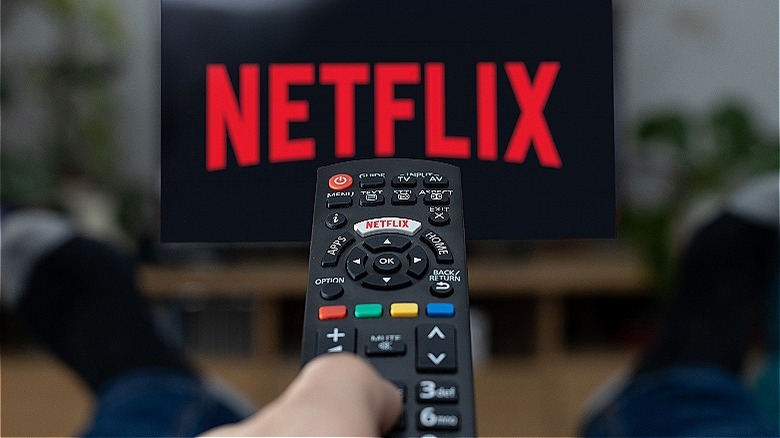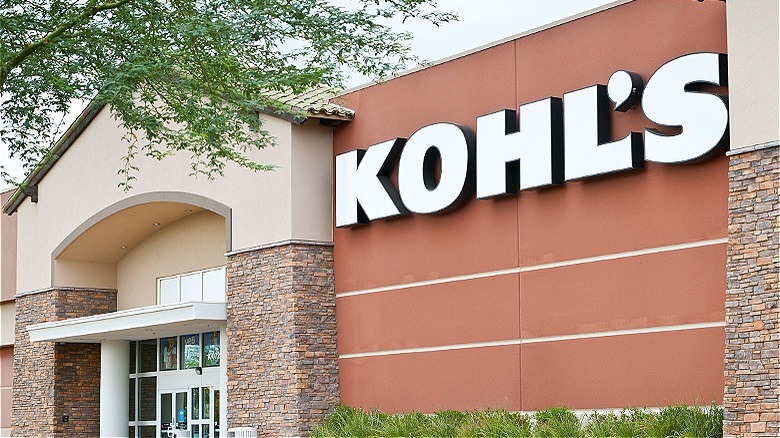Jim Cramer's Worst Financial Advice
Jim Cramer's "Mad Money" personality on CNBC is likely something that every investor has come across. Not only does Cramer talk about vast swaths of the stock market, but he also does so in a way that seizes attention. "Mad Money" is characterized by the host's physical performance and his brash, loud delivery, as well as, of course, the sound effects that accompany stock takes.
Cramer has staked a claim for himself in a particular section of the television pundit landscape. A former Goldman Sachs trader who eventually launched his own firm, Cramer has the pedigree to be a quality investment adviser. However, anyone who watches his show, listens to him speak, or reads his investment advice products likely knows Cramer is a somewhat challenging figure. To give him credit, he isn't afraid to own up to blunders and to mistakes off-set. But the outspoken entertainer persona that most casual viewers will know him for isn't showcasing a pensive or analytical mind that can objectively take a step back and learn from missed stock picks or shortsighted strategy.
An oddly fascinating character, Cramer provides a veritable playbook of how not to approach the market if you're looking to save for the long term. In fact, his own definition of "mad money" — his claim to prominence — is money meant for stock trading, but outside of retirement savings and/or other long-term investment goals. It's with this understanding that Jim Cramer's often-questionable financial advice comes into focus.
Cramer says, 'Try to beat the market'
One consistent feature of the experience provided by Jim Cramer's financial advice is this idea that investors should potentially aim to beat the market. Cramer often speaks about the flaws and failings of his history in the marketplace when not performing his "Mad Money" act for the camera. Every investor will have their own horror stories about times when the market got the better of them and Cramer, to his credit, is willing to share these learning experiences under the right circumstances. However, the platform he's best known for tends to lean into a strategy of aggressive stock picking in an effort to find the next best thing before it blows up.
Investors of all stripes should be wary of this kind of approach. Note, professional investors rarely beat the market over the long term, even if they may be in a position (with accumulated knowledge and experience) to pick a few stocks that perform well here and there in the short. By and large, the best way to ensure great returns on your investment is to create a diversified portfolio and invest in simple-to-understand index funds and ETF holdings. These kinds of investments provide widespread market exposure and will give you an investment covering the entire scope of the marketplace to create both long-term profit accumulation and downside reduction that's absent when opting for a strategy primarily aiming to best the market.
He maintains a consistently bullish outlook
Jim Cramer is consistently bullish when it comes to investments. What this means in practicality is that Cramer routinely recommends buying stocks, and he rarely offers up a sell call. Analysis of his recommendations between 2016 and 2022 (via the data project Jim Cramer's Recommendations: A Six-Year Analysis) shows a 10.32% distribution of sell recommendations alongside 61.27% buys, plus a smattering of positive or negative commentary without a formal buy or sell recommendation attached.
Given the time frame studied, this distribution is somewhat troubling. During the first half of the years analyzed, the marketplace was experiencing widespread upward momentum at what has now become the tail end of an incredibly long bull market run that started all the way back in 2009. The pandemic played a role in dismantling this upward pressure, though it isn't the only factor to be considered. Even so, Cramer's 0.15% rate of recommending hold positions is simply inconsistent with good strategy when trading in either an upward trending market or the bear trading period that came after this run's end in 2020. Jim Cramer doesn't seem to have adjusted, as is necessary for intelligent portfolio protection through all phases of marketplace change.
The performance of his stock picks is mixed
While Jim Cramer doesn't often recommend selling assets, when he does recommend it, he is often wrong about the stock in question. Between 2016 and 2022, the one-year average return on stocks he recommended selling added up to a 14.25% increase in value. This means that viewers who took his advice 100% at the time would've missed out on a sizable boost to their portfolio year over year. To be fair though, the one-year average return for his buy picks came out to a 16.39% increase, meaning many of his selections did in fact perform well during this time period. But there's a certain cherry- picking of data that must take place to seriously tout these as comparable since this is fundamentally a reading of opportunity cost.
It can't be overstated that in the days and weeks following a Jim Cramer sell recommendation, the stock in question has tended to perform with a mixed bag of success. Generally speaking, there's a random distribution of value addition and loss occurring directly after the pundit makes a pick. But crucially, during this time, Cramer never made a sell recommendation that ended up saving investors substantial capital through a massive drop-off in value, while on multiple occasions during this six- year stretch, directly after a sell recommendation, stocks increased astronomically in value. Most notably, PG&E's 76.6% increase the day after Cramer's sell recommendation on January 23, 2019, certainly would've left many viewers in a frustrating spot.
His constant shuffling doesn't work for most investors
Jim Cramer has spoken about thousands of stocks throughout the nearly 20-year run of his show "Mad Money." This is naturally part of the deal since a show rehashing the same 10 or 15 stocks day after day wouldn't be very entertaining for viewers. Moreover, commentary on "Mad Money" often places Cramer as an entertainer first and analyst second, which is easy to see considering the wild antics he gets up to and the sound effects that dominate much of his performance.
The somewhat manic style of his delivery and blurred line between analyst and entertainer can lead investors who watch him regularly to think that buying tons of assets on a regular basis is a sound investment strategy. In reality, a quality portfolio will likely showcase between 10 and 30 individual stocks, including individual company shares, ETFs, index funds, and perhaps even bond, bullion, or REIT funds. Diversification is important, but too much of it can lead to vulnerability and middling results.
Time is a major factor in an assets journey call and allowing the picks you do make the time they need to reach fruition is crucial. Buying and selling assets every single day is a bad strategy for most investors who are looking to save for retirement or take advantage of dividend payouts to support their lifestyle in the present.
He failed to predict the dot-com bubble burst
Jim Cramer's approach highlights a number of less than stellar pieces of investment advice. But his financial advice isn't the only issue at play, as he has a history of betting on the wrong horse. Anyone who tries their hand in the stock market or provides advice to others will get it wrong sometimes, but Cramer has notched an impressive set of gigantic blunders. One of his worst came just days before the dot-com bubble burst.
On February 29, 2000, Cramer delivered a keynote speech at the 6th Annual Internet and Electronic Commerce Conference and Exposition, where he heaped praise on the tech sector in general, as well as named a variety of his favorite stock picks. Not only did he say "only those companies are worth owning" about the tech sector over virtually every other, but he noted gleefully that many companies in this classification didn't "even have earnings per share, so we won't have to be constrained by that methodology for quarters to come." While it's true fast-developing investments require a sort of leap of faith, actively championing a disregard for proven analysis metrics is a dangerous approach that investors would be wise to steer clear of.
He proclaimed Netflix a hard sell in November 2012
Another one of Jim Cramer's poor stock picks returns to the tech sector, coming more than a decade later. In November 2012, Cramer proclaimed Netflix as one of his sell selections. With hindsight, it's evident Netflix consolidated its position of strength shortly thereafter and has continued to perform exceedingly well in the years following. But in late 2012, there were indeed signs Netflix could face some unique challenges in the months ahead. For one thing, Netflix adopted a poison pill policy for shareholders to fend off a potential hostile takeover. But upward momentum was already building at this time and launched the brand to new heights shortly after Jim Cramer's prediction.
2013 marked Netflix 's first foray into original programming, led by the monumental success of "House of Cards," something Netflix conducted considerable research on before going all in on the project. Since then, much of the platform's draw has centered on original programming, marking yet another epic shift for the content service. What's certain is that six months after Cramer suggested dumping Netflix stock, the company's value increased by 174%.
Cramer advocated buying Kohl's stock just before it fell
Poor financial advice on when to sell isn't Jim Cramer's only issue. Like many other stock market commentators, Cramer has been caught sleeping with some of his buy picks, too. In April 2015, Jim Cramer advocated for Kohl's, suggesting it was poised for a terrific value run.
Yet a month later, Kohl's saw its biggest-ever price drop, trading 13.27% lower than at open on the day. It would continue to slump after a weak earnings report for the majority of the remaining year. In November, it reported positive results but suffered from an industry-wide downturn that kept the company's value from fully recovering. What's perhaps unique about this poor pick, aside from the 41.11% loss of value within six months, is the missed analysis of the wider industry.
Not only was Kohl's stock a bad buy at the time, but Cramer failed to realize the weakness of the furniture and household goods marketplace as a whole — in the same way he overestimated the tech sector before the dot-com bubble burst. It's possible this showcases a pattern for Jim Cramer, in missing the forest for the trees when it comes to wider marketplace trends.
He leans into volatility a little too willingly
Beyond Jim Cramer's appearances on "Mad Money", the analyst and entertainer also founded the Action Alerts PLUS Portfolio, which he left in 2021, along with TheStreet, per Variety. He left for a broader CNBC deal, which is also where he manages a charitable trust portfolio and offers financial advice/research to members of CNBC's Investing Club, which costs $399.99 a year or $49.99 per month.
This said, when he did run the Action Alerts PLUS Portfolio, it had underperformed the S&P 500 consistently. Between August 1, 2001 — when it was founded — and March 31, 2016, the portfolio had a return of 64.5% in comparison to the S&P 500's 126.1% jump in value. An underperformance this severe raises a significant question mark regarding Cramer's ability to select high-performance stock assets.
Perhaps the most important feature investors should be wary of here, however, is that these picks averaged out to be 5% more volatile than the S&P 500 in aggregate. Volatility and risk are necessary to create the returns investors are looking for. But leaning into volatility just for the sake of it is a recipe for underwhelming performance that introduces too much risk without the requisite reward. Volatility must be matched with slow-moving, high-reliability assets, such as index funds or even bond holdings, in order to perform their intended function.
He suggested 'selling everything now' in 2008
In late 2008, Jim Cramer found himself on the "Today" show suggesting investors should consider "selling everything now," as a result of indications the market could decline in the near future — and potentially remain somewhat deflated over the following year.
While Cramer tends to be a bit of a risk-taker in the marketplace, this financial advice seemingly represents the exact opposite strategy. The "sell everything" mentality isn't sound financial advice under virtually any set of circumstances. The reality is that the stock market can take a massive hit at any given moment and as a result of a startling array of factors. From elongated downturns to flash crashes, the stock market has seen just about everything by now. Attempting to predict when the next downturn may occur is a fool's errand and could lead investors on a wild goose chase, looking for signs of the apocalypse at every turn.
Most investment analysts will talk about rebalancing as more of a soft reallocation of assets. This means selling stocks when they reach a kind of natural high watermark, but typically not the entirety of a portfolio's holdings and looking to buy into new assets or adding to a position when stocks see a relative dip in price. Likewise, holding on to assets is typically advised, even when market outlook appears bleak, perhaps especially then.
He's guilty of assuming a company can/will be the next 'X'
In 2017, Jim Cramer invited SodaStream CEO Daniel Birnbaum onto his show and noted that the company appeared to be headed in a great direction. He suggested it could even be the next Green Mountain Coffee (which he famously whiffed on with his sell recommendation in 2012 just before the company went on an explosive run in the stock market). It's easy to fall back on these kinds of comparisons because they make connections easier and provide a vantage point for investors and viewers who may not have the technical chops necessary to fully evaluate a breakout company's position of strength or its potential weaknesses.
And yet, likening a new breakout success to an existing star can be damaging to future analytical processes. Making these kinds of connections boxes investors into preset molds and ways of thinking rather than allowing them to explore a company's full potential beyond the shadow of some other titan of industry or overnight success story. Every company is unique in its marketplace advantages and challenges. SodaStream was ultimately sold to Pepsi for $3.2 billion, a massive win for the brand but ultimately a figure that sets its growth rate nowhere near the monumental transformation of a company like Green Mountain, which went from true startup to a gigantic success. This way of thinking creates expectations in the minds of investors and closes off opportunity.
Thinking 'what's the worst that happens?'
In the 1990s, Jim Cramer purchased hundreds of thousands of shares of the Silicon Valley startup Memorex Telex. Cramer went all in on this brand after it had gone through bankruptcy proceedings, leaving the stock price at just $2 per share. He spent a huge amount of time exploring the company's financial data, even speaking with its management team to get a sense of where the brand could be headed. Cramer continuously bought huge sums of shares, sinking an increasingly large amount of money into his ownership stake. Importantly, Jim Cramer says he justified this approach by telling himself: "What's the worst that happens?"
Jim Cramer has been a millionaire since his late 20s after achieving significant financial success early on in life. As a result, he can afford to sink tons of cash into what ultimately might result in a complete loss — as was the case with Memorex Telex. But for most investors, this kind of mentality will only end in heartbreak and lots of trouble. Cramer himself notes that Memorex Telex was the worst investment mistake of his career and that investors shouldn't follow this example, instead learning from his mistake and opting for a better path.
At the heart of it, this mindset of "What's the worst that happens" is one built on faulty logic and either a misunderstanding of the data or a rejection of it altogether. In Cramer's case, it came down to a misunderstanding of the company's debt. For an investor who isn't a professional in the field, it often shows itself is a lack of knowledge and a hope-and-a-prayer approach.
Cramer frames himself as a great predictor
Jim Cramer has suggested that investors shouldn't fancy themselves as predictors of the future. Moreover, he says that traders shouldn't beat themselves up over past mistakes. Errors in judgment happen all the time in the investment world and getting hung up on any one only serves to create negativity going forward. This is actually quality financial advice, as trying to gauge where the market will go over the long term is something that's bound to drive one crazy. While marketplace knowledge and data analysis can help traders make more intelligent decisions, there's an element of randomness to the way events unfold and company stocks react. It's truly an impossible task to predict the future of any given stock price.
Even so, Cramer often frames himself as someone who is a pretty consistent predictor of future market behavior. This is a contradiction that should be noted for anyone looking to Jim Cramer or any other financial expert for routine advice on savings, investments, or any other aspects of this financial realm.
Finally, his TV show eradicates first-mover advantages
Lastly, while this isn't specifically about past financial advice dished out by Jim Cramer, it's worth noting that any advice Cramer does give on national television immediately loses at least some of its efficacy. The large platform that Cramer is afforded means that any advice he offers up, he does so to potentially every investor out there. Generally speaking, stock traders are looking to buy when prices are good and sell when they reach their peak before turning back around and consolidating at a lower price point. To get this timing right, investors require a first-mover advantage that sees them beat the majority of others to a great stock. As with any commodity, when more people are buying, the price goes up.
When Cramer names a stock as a new buy selection on his program, he eradicates any first-mover advantage traders might be able to take advantage of by following his advice. Once a stock is named, everyone knows it's on his radar and potentially should be on theirs as well. Keeping this in mind is an important step in the process of following any financial advice provided by Cramer or any other stock market analyst out there. Public information is just that, public.
That said, a potentially valuable approach instead might be to consider the kinds of stocks Cramer is targeting. If he speaks highly of utilities, for instance, it might be worth looking into other businesses in the sector or digging even deeper to uncover tertiary brands that work with or serve companies in the utility industry.













